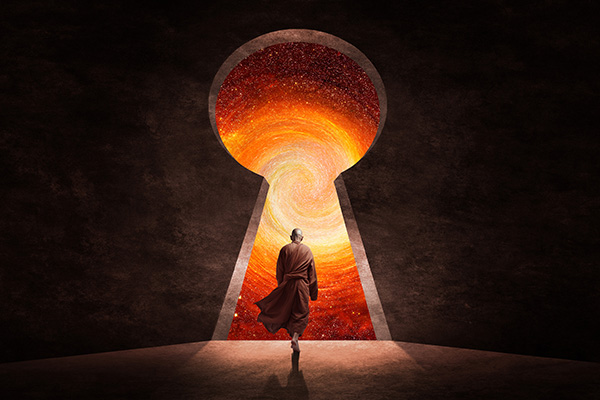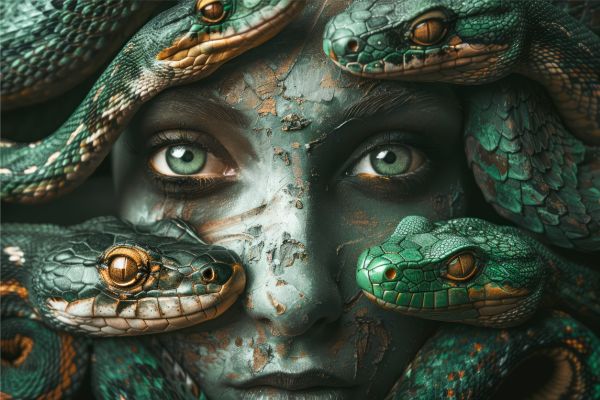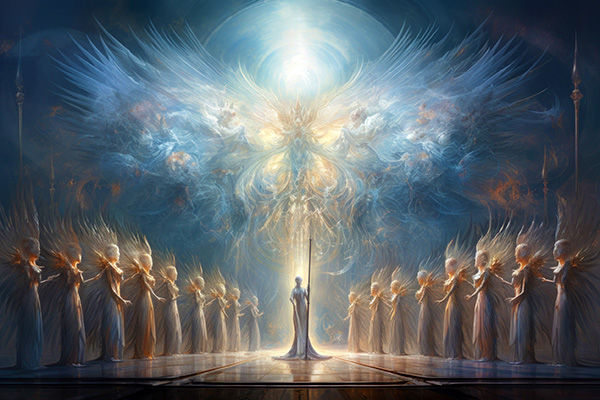spiritual traditions
Ready For Your Spring Spiritual Renewal?
 Today marks the Spring Equinox and the first day of spring in the Northern Hemisphere. Known also as the Vernal Equinox, it is an astronomical event that marks one of the two times of the year when day and night are nearly equal in length. It usually occurs around March 20th or 21st in the Northern Hemisphere.
Today marks the Spring Equinox and the first day of spring in the Northern Hemisphere. Known also as the Vernal Equinox, it is an astronomical event that marks one of the two times of the year when day and night are nearly equal in length. It usually occurs around March 20th or 21st in the Northern Hemisphere.
During the equinox, the sun crosses the celestial equator and moves north. Many cultures and traditions celebrate it as a time of balance, renewal, and growth. As nature shifts into balance, we are invited to do the same — to clear away what no longer serves us and move into a season of light, action, and new beginnings.
Spring is a new beginning. A new sun rising. The dawn in the wheel of the year. At this time of year our minds are bright and alive with new ideas. Many of us feel inspired and excited to try new things. Life awakens in the warm sunlight and our spirits feel ready for a new beginning.
One of the longstanding customs associated with this time of year is the tradition of “spring cleaning.” Across cultures and generations, people have used this time of year to refresh their homes, clear out accumulated clutter, and invite new energy into their lives.
But spring cleaning is more than just cleaning up our physical space — it is a sacred ritual of renewal, release, and transformation. As the earth awakens from hibernation, we too are called to clear out the old and make room for new energy. From a spiritual perspective, this process is an opportunity to realign ourselves with higher frequencies, release stagnant energy, and invite clarity into our lives.
Reincarnation And The Karmic Journey Of The Soul
 Reincarnation — the belief that the soul experiences multiple lifetimes through a continuous cycle of birth, death, and rebirth — is embraced by many spiritual and religious traditions worldwide. Wisdom traditions such as Hinduism, Buddhism, Jainism, and various indigenous belief systems integrate reincarnation deeply into their teachings.
Reincarnation — the belief that the soul experiences multiple lifetimes through a continuous cycle of birth, death, and rebirth — is embraced by many spiritual and religious traditions worldwide. Wisdom traditions such as Hinduism, Buddhism, Jainism, and various indigenous belief systems integrate reincarnation deeply into their teachings.
For those who embrace the concept, reincarnation offers a transformative perspective on life and mortality. When we believe that our soul consciousness continues beyond this life, death is no longer something to be feared. Instead, it becomes a transition — a doorway to new opportunities for growth and evolution. Reincarnation provides a rich and expansive framework for understanding the soul’s journey.
Whether you fully embrace the concept or explore it with curiosity, reflecting on the interplay of karma and rebirth can inspire greater mindfulness, compassion, and purpose. In this view, death is not an end, but a passage — a gateway to continued exploration and spiritual progress.
Belief in some form of continued existence beyond this life is widespread. A 2011 Ipsos Global Advisor survey of more than 18,000 people in 23 countries found that 51% of respondents believe in an afterlife that includes beliefs in heaven, hell, and reincarnation. Specifically, 7% of respondents said they believed in reincarnation.
In the United States, a 2021 Pew Research Center survey found that approximately 33% of adults believe in reincarnation. This belief is more prevalent among younger adults under 50 (38%) compared to those aged 50 and older (27%).
The Healing Power Of The Ocean
 Just as we clean material objects to maintain their quality and longevity, our mind, body, and spirit also require regular cleansing to ensure optimal functioning. Environmental stressors, emotional upheaval, and the demands of daily life can accumulate as energetic debris that weighs us down physically, mentally, and spiritually.
Just as we clean material objects to maintain their quality and longevity, our mind, body, and spirit also require regular cleansing to ensure optimal functioning. Environmental stressors, emotional upheaval, and the demands of daily life can accumulate as energetic debris that weighs us down physically, mentally, and spiritually.
Our energetic field absorbs influences from people, places, and experiences. Over time, unresolved emotions, stress, and negativity can cloud our vitality, leading to fatigue, irritability, and disconnection from our inner selves.
Just as we clean our homes or our physical bodies, it’s important to clean our energy field. Neglecting to do so can affect our long-term well-being, leaving us feeling drained and spiritually stagnant.
One of the most profound ways to restore balance and revitalize our energy is through ocean healing – a timeless practice known to humankind since ancient times.
The ocean has long been revered as a sacred space for cleansing and rejuvenation. Its rhythmic waves, expansive horizon, and vast depths symbolize release, renewal, and infinite possibilities.
Simply spending time by the ocean can have a profound effect on our nervous system, calming the mind and grounding the emotions. The soothing sounds of the waves, the cool breeze, and the connection to the Earth’s vast waters stimulate relaxation and promote a meditative state, making it easier to release tension and embrace inner peace.
Change Your Thoughts, Change Your Life!
 We’ve all had those days when all we do is tear ourselves down. In moments of self-judgment and negativity, we tell ourselves that we’re not good-looking enough, rich enough, smart enough, young enough, thin enough, talented enough… the list goes on.
We’ve all had those days when all we do is tear ourselves down. In moments of self-judgment and negativity, we tell ourselves that we’re not good-looking enough, rich enough, smart enough, young enough, thin enough, talented enough… the list goes on.
While occasional self-criticism is normal, for many it becomes a lifelong habit of self-torture — an internal dialogue of negativity that shapes their reality.
Negative thinking and judgmental self-talk have profound effects on both mental and physical health. Chronic self-criticism fuels anxiety, depression, and low self-esteem, often leading to feelings of hopelessness and inaction. On a physical level, this mindset increases stress and weakens the immune system, making us more susceptible to disease.
But beyond psychology and biology, this pattern also has metaphysical implications — it acts as a self-fulfilling prophecy. The more we tell ourselves that we are unworthy, incapable, or unlucky, the more these beliefs take root in our energy field. Over time, they manifest as actual experiences in our daily lives, reinforcing the very negativity we wish to escape.
The good news? Just as negative thoughts shape our reality, so do positive thoughts. When we shift our mental energy toward uplifting, empowering, and constructive thoughts, we raise our energetic vibration. Over time, this inner shift produces tangible results — our confidence grows, new opportunities arise, and life begins to feel more fulfilling.
The Mystical Year Of The Yin Wood Snake
 As we settle into 2025, the energy of the Yin Wood Snake begins to take shape, revealing its unique rhythm and influence.
As we settle into 2025, the energy of the Yin Wood Snake begins to take shape, revealing its unique rhythm and influence.
While the excitement of the Chinese Lunar New Year celebrations may have faded, the true essence of the year is beginning to unfold.
Now is the perfect time to align with the energies of the Wood Snake, harness its mystical power, and set a clear, intentional path for the months ahead.
The Year of the Wood Snake brings a harmonious fusion of intuition, mystery and steady growth.
The Snake, known for its wisdom and transformation, merges with the nurturing and grounding essence of the Wood element this year, fostering patience, adaptability, and a deep connection to our spiritual and emotional roots.
Unlike the impulsive Fire Snake or the analytical Metal Snake, the Wood Snake encourages thoughtful progress and long-term vision, making 2025 an ideal year for meaningful evolution.
In many cultures, the Snake symbolizes rebirth, wisdom and mystery. Its ability to shed its skin represents the release of outdated beliefs, limitations, and habits, clearing the way for renewal. This year invites you to embrace transformation, trust your intuition, and align with the subtle yet powerful energy of the Snake as you enter a year of profound personal and spiritual growth.

